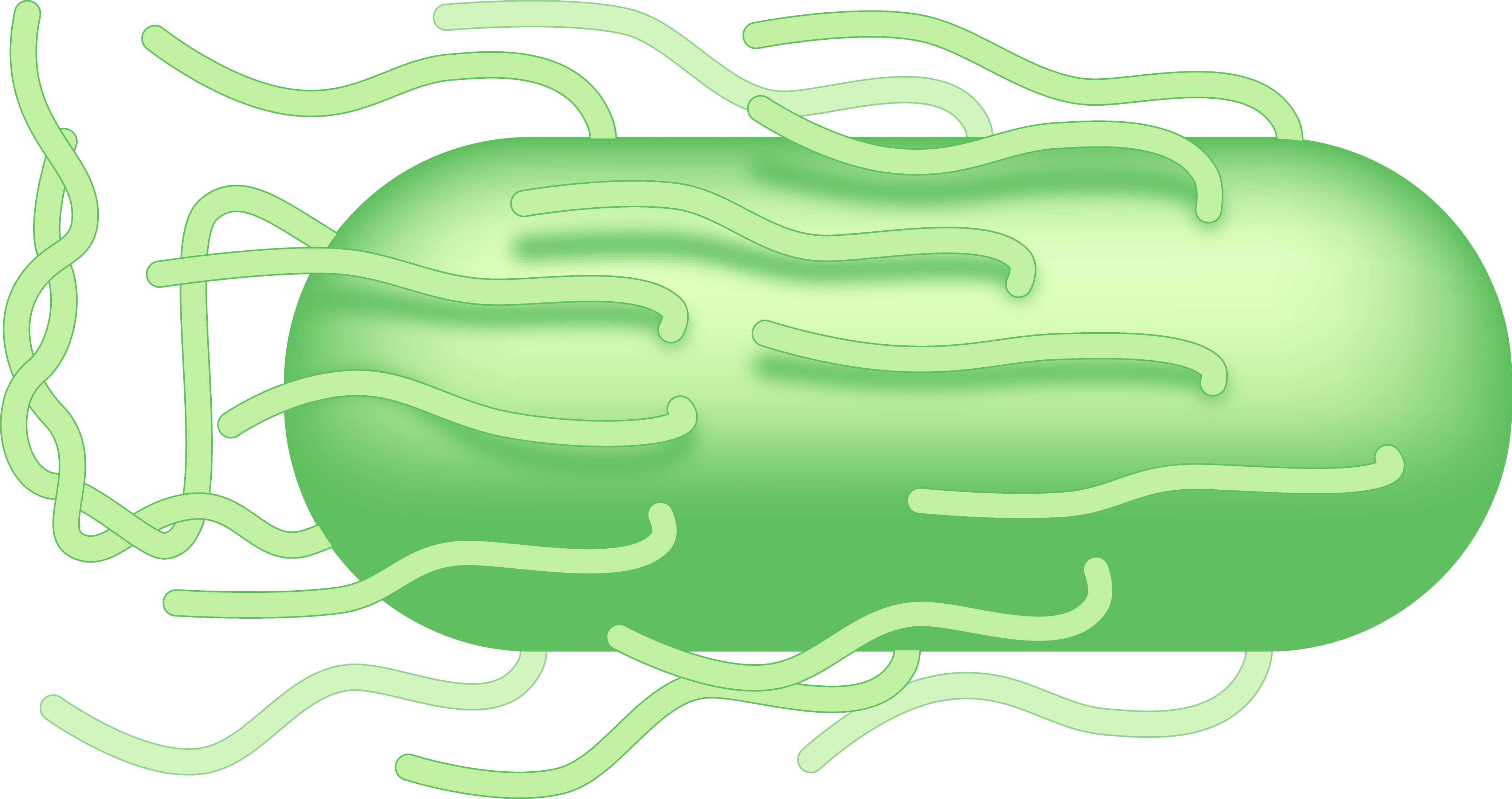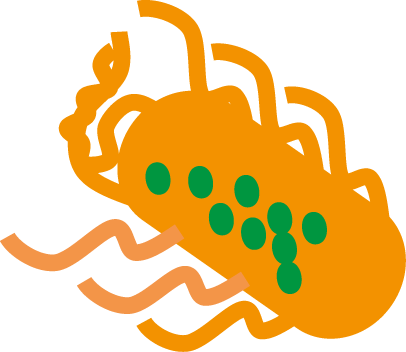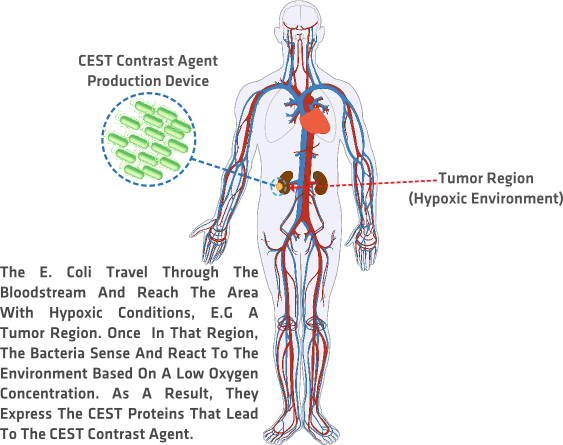Team:TU-Eindhoven/Project
From 2013.igem.org
Pascalaldo (Talk | contribs) |
(→Project Overview) |
||
| Line 12: | Line 12: | ||
{{:Team:TU-Eindhoven/Template:FloatingImage | position=left | size=5 | filename=genDiagramI.png}} | {{:Team:TU-Eindhoven/Template:FloatingImage | position=left | size=5 | filename=genDiagramI.png}} | ||
| - | |||
Our project focuses on a relatively new form of {{:Team:TU-Eindhoven/Template:Tooltip | text=MRI | tooltip=Magnetic Resonance Imaging }}: {{:Team:TU-Eindhoven/Template:Tooltip | text=CEST | tooltip=Chemical Exchange Saturation Transfer }} imaging. CEST imaging proteins contain hydrogen atoms which can be used to create the same image quality as when conventional heavy metals are used. We use Escherichia coli to create CEST proteins when the bacteria sense a {{:Team:TU-Eindhoven/Template:Tooltip | text=hypoxic | tooltip=Low oxygen saturation }} environment, thus working as a production factory and delivery system for the CEST MRI contrast agent. | Our project focuses on a relatively new form of {{:Team:TU-Eindhoven/Template:Tooltip | text=MRI | tooltip=Magnetic Resonance Imaging }}: {{:Team:TU-Eindhoven/Template:Tooltip | text=CEST | tooltip=Chemical Exchange Saturation Transfer }} imaging. CEST imaging proteins contain hydrogen atoms which can be used to create the same image quality as when conventional heavy metals are used. We use Escherichia coli to create CEST proteins when the bacteria sense a {{:Team:TU-Eindhoven/Template:Tooltip | text=hypoxic | tooltip=Low oxygen saturation }} environment, thus working as a production factory and delivery system for the CEST MRI contrast agent. | ||
Revision as of 14:59, 4 September 2013





Abstract Our project presents an alternative solution to the use of heavy metals MRI contrast agents by focusing on CEST MRI. Within CEST imaging, proteins enclosing hydrogen atoms generate high quality images. We use Escherichia coli to create CEST proteins when the bacteria sense a hypoxic environment due to a promoter designed for this purpose, thus working as a production and delivery system for the CEST MRI contrast agent. Hypoxic regions are related to tumors,therefore our eventual goal is to use this device to target and image tumors in humans by injecting the bacteria into the bloodstream. A second application is tracking bacteria in bacterial infections studies. For the iGEM competition however, the proteins are only expressed ex-vivo:in aerobic and anaerobic conditions. We aim to achieve an efficient testing of the CEST properties of the proteins and confirm the promoter’s ability to express each protein.
Project Overview

Our project focuses on a relatively new form of MRI: CEST imaging. CEST imaging proteins contain hydrogen atoms which can be used to create the same image quality as when conventional heavy metals are used. We use Escherichia coli to create CEST proteins when the bacteria sense a hypoxic environment, thus working as a production factory and delivery system for the CEST MRI contrast agent.
In order to achieve the production of our bacteria based CEST MRI contrast agent, we must create a series of diverse models focusing on the different components of the MRI contrast agent production. These models range from the selection of the most adequate proteins for CEST MRI to the behaviour of the FNR promotor and the bacterial killing mechanism.
In the lab we attempt to produce the CEST MRI proteins, both aerobically and anaerobically. To Enable the anaerobic expression specialized promotors are designed to react to the changes in oxygen saturation and ultimately trigger the protein expression. Once the protein expression is successful either aerobically or anaerobically, these proteins are tested for the quality of their contrast in an MRI machine.
Based on the principle of our project, we propose two applications, tumor CEST MR Imaging and tracking of bacteria in bacterial infections studies. It is well known that tumors present a hypoxic environment, therefore our bacteria can be injected into bloodstream to travel into the tumor region. Once in the tumor region, the hypoxic conditions of the area will trigger the production of the CEST proteins by the E. coli. generating the required CEST contrast agent for MRI. This will ensure that MRI contrast is created where tumors are present, and also provides a good means of tumor targeting for drug delivery systems in the future. Once the CEST MRI images have been taken, the bacteria will be killed and eliminated from the body using our killing mechanism. In order to be injected into the bloodstream the bacteria should be modified once more to avoid activating an immune response. Similarly, our production and delivery system can be used for tracking bacteria in bacterial infection studies.
 "
"